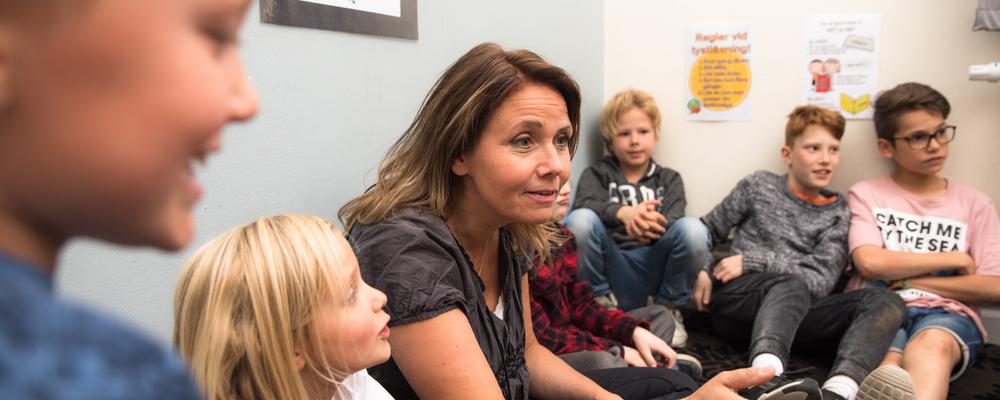“Swedish teachers tell more stories than they are aware of,” explains Dr Ola Henricsson. “This often occurs spontaneously during teaching. Examples include anecdotes, recollections and other brief narratives. For example, one teacher told pupils who didn’t want to take part in a swimming lesson how her brother almost drowned.”
Dr Henricsson has also investigated the role played by storytelling in teaching. He interviewed 40 compulsory school teachers about their storytelling, observed lessons and recorded teachers’ and teacher students’ when they told stories.
The significance of storytelling in teaching
Most narrative is spontaneous, but it is sometimes part of teachers’ planning. One example involves a lower secondary school teacher who began a theme on antiquity by telling ancient myths to arouse pupils’ interest.
“Regardless of whether the storytelling is planned or spontaneous, it is clearly intertwined with teaching and subject content,” he continues. “Teachers described how their storytelling are of great importance for building relationships with pupils, getting their attention and capturing their interest.”
Key aspects of teachers´ storytelling are that the content of teaching comes to life and the situation becomes unpredictable. It is never entirely possible to predict how pupils will interpret or experience a story.
“Teachers´ storytelling packaged subject content together in a way that made pupils curious and showed that they can access and understand this content in different ways. This involves a risk of not succeeding or straying away from the subject. However, there is also an opportunity to create understanding and for the teaching to become more about life itself.”
Stronger relationships
Another key aspect is that storytelling strengthens relationships. An intimate situation is created in which the teacher stands in front of the entire class and is clearly physical, as gestures, posture and facial expressions are all part of storytelling. The ability to use storytelling benefits the teacher’s general teaching skills, such as standing in front of a class and shaping subject content.
“Storytelling is created in a mutual relationship, in which the narrator is dependent on the listeners following and responding. Some teachers described this situation as a strong encounter in which the teacher has the pupils’ full attention, and this brings a responsibility. In slightly contradictory terms, teachers´ storytelling becomes apparent as a professional way of listening to pupils.”
Difficulties with storytelling
Previous research shows that teachers see many positive aspects of storytelling. At the same time, they also say that they do not tell stories very often due to a lack of time, that it does not relate to the knowledge objectives and that it is hard to measure what pupils learn.
“We currently take an instrumental view of teaching, with specific objectives and continuous measurements of teaching outcomes. There is therefore a risk of thinking that oral storytelling is not compatible with teaching. However, from an educational perspective it is an opportunity. Storytelling creates an opportunity for the group to learn together, and to learn about life within the framework of subject teaching.”
Text: Carl-Magnus Höglund
